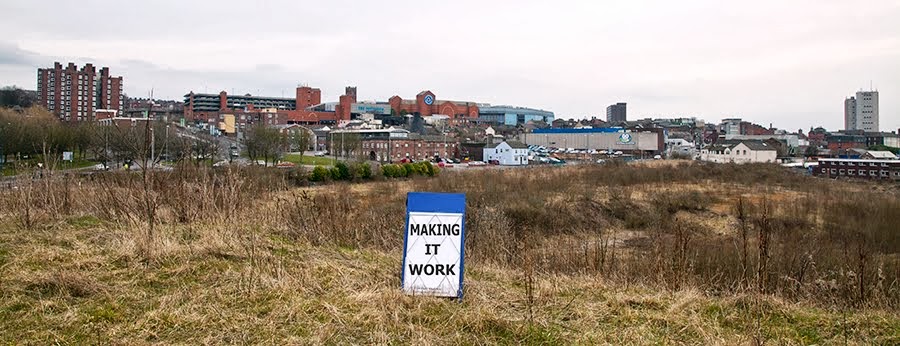Total Transparency?
At the last consortium meeting we had a lively discussion about how much transparency we can, and should, display as small arts organisations. This got me thinking - well surely in the era of Freedom of Information and Wikileaks nothing less than total transparency will do.
Well, yes and no. As an organisation, I agree. As a charity and company limited by guarantee our accounts, trustees reports and board meetings are matters of public record. There is very little about the company that isn't either in the public domain or could be put there very easily. Any project that has received public funds in turn makes our reports publicly available (eg via FOI requests).
But I would draw a distinction between information on the company and information on individuals. Our annual accounts show total salary bill, not what each person earns. What we paid each individual artist who worked for the company is likewise aggregated.
And I'm not sure I'd like to see a 'see salaries' button on our website. We support a lot of emerging artists and early career professionals. They go on and use our name, quite rightly, in securing future work. They probably over-achieved and were underpaid in the work they did, I'm certainly happy for them to present what they did for us in the best possible light.
Likewise, I would like to present myself and the work of the company in the best possible light to potential funders and partners. It's part of my job to get doors opened to senior people in the public sector. They are usually paid more than I am, and when they go our website to look at our work I wouldn't like what I earn to be necessarily one of the first things they see.
Trevelyan Wright, Executive Director.
11/10/2013
09/10/2013
bITjAM - What can we learn from the last 18 years of Lottery Funding in Stoke on Trent?
I thought it would be useful to examine lottery funding data spanning back to the heady days of 1995 to get a sense of the successful grants and also get a sense of the type of work that lottery funding used to support. I'm not quite sure how this data fits into helping Arts Organisations moving forward with seeking new ways of generating funds for projects; I'm open to ideas.
Using the Lottery section of the Culture website and searching for Stoke on Trent reveals around 18 years of data which reveals 1223 projects totalling £117,872,724.
Now I thought it would be best to ask a range of questions against this data including:
The charts below show some of the data in visual form using Google Charts (it's quick and simple once I completed a little analysis). I also used a few extra tools up my sleeve to link Company names in the list to Companies house to get a sense of the types of company formations involved (Limited by Shares, CiC etc). I've also ran the project descriptions through a little analysis to get a sense of keywords that get repeated in the project titles, I looked for Named Entities rather than the usual word frequency (the type you see in Wordles). This analysis reveals a little more about the meaning of the high frequency words/phrases in the text .
It's up for grabs what we learn from this data, for me the named entities has been insightful however there's more analysis to be done, what can you find? How can we use data like this to move forward?
Here's the link to full data.
Funding over time:
(There were approx 961 awards given to groups with no formal structure recognised in Companies house although company names may have changed, but NOT 961 individual groups, just awards, some groups were awarded more than once. Data to be further analysed)
Using the Lottery section of the Culture website and searching for Stoke on Trent reveals around 18 years of data which reveals 1223 projects totalling £117,872,724.
Now I thought it would be best to ask a range of questions against this data including:
- Which organisations got what amounts?
- Which types of projects were successful?
- Who funded the projects?
- What was the pattern of funding over time?
- What are the key phrases that repeat in the project descriptions?
The charts below show some of the data in visual form using Google Charts (it's quick and simple once I completed a little analysis). I also used a few extra tools up my sleeve to link Company names in the list to Companies house to get a sense of the types of company formations involved (Limited by Shares, CiC etc). I've also ran the project descriptions through a little analysis to get a sense of keywords that get repeated in the project titles, I looked for Named Entities rather than the usual word frequency (the type you see in Wordles). This analysis reveals a little more about the meaning of the high frequency words/phrases in the text .
It's up for grabs what we learn from this data, for me the named entities has been insightful however there's more analysis to be done, what can you find? How can we use data like this to move forward?
Here's the link to full data.
Funding over time:
(There were approx 961 awards given to groups with no formal structure recognised in Companies house although company names may have changed, but NOT 961 individual groups, just awards, some groups were awarded more than once. Data to be further analysed)
Labels:
analysis,
data,
funding,
learning,
lottery funding,
news,
projects,
research,
stoke on trent
Subscribe to:
Posts (Atom)
